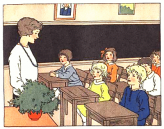The Adoption Process....a general overview
Initial Application

Once a couple, or a parent, decides to adopt, he or she would first submit an initial application to an agency of choice. Usually the application is sent along with a fee, a photo of the adoptive family, and any letters of explanation that would need to be included about criminal background or medical history. The application is short, a few pages, and mostly consists of information about address, income, criminal background, and it serves to inform the agency about which country the family wishes to adopt from and which age, gender, or ethnic background the family would like to adopt. The application is reviewed by the agency and either approved or not approved. Upon approval, a new packet of paperwork and information is sent to the family, and an adoption counselor is assigned who will help guide the family through the remainder of the process.
Registration Packet (Agency-specific)

The registration packet is a series of forms that the adoptive parents fill out with regards to their income, health, tax information, and also includes agreements concerning international travel conduct and internet conduct (one cannot post photos of a referral child that has not yet been adopted). In addition to the forms, parents send in birth certificates, marriage certificates, copies of past years tax information, and photos of themselves, possibly with autobiographies. This information is strictly for the agency's use and the requirements may differ from agency to agency.
Adoption Education and Training (Agency-specific)

Differing amounts of time are required for different agencies and different countries. Adoption training is a way for parents to learn about the process, about what to expect and different things that can either expedite or slow the process. It also teaches parents about facilitating attachment and bonding, and what to expect those first months home.
Homestudy

The homestudy process involves several interviews with the social worker who is working with your family for the adoption. Typically it includes at least one visit to your home, one interview with you as a family (either at your home or in the agency) and interviews of the adoptive mother and adoptive father separately. The adoptive parents get an opportunity to tell the social worker things about themselves that they feel he or she may need to know, or things that they feel make them good candidates for adoption and parenting. Usually the social worker has specific questions for the parents and family regarding their marriage, other children in the home, parenting and discipline strategies, religious and moral views, and questions to determine the safety of the home. The homestudy can seem quite intimidating at times but is the social worker's way of getting to know the family so that he or she can best help them be successful in the adoption process. All of the information gathered during the interviews is compiled into a written document which is notarized and sent to the placing agency and the country from which the family seeks to adopt.
I-600A

After agency approval of your application, you then fill out a from from USCIS (our immigration department) called an I-600A, which is the Petition for Advance Processing of Adoption of an Orphan. This is sent to USCIS along with birth certificates, marriage certificates, a fee, and an agreement to pursue a homestudy. Once USCIS receives the I-600A, they send you an appointment to get fingerprinted, and the prints are returned to USCIS for a background check. The end result of this step is to receive an I-797C, which is essentially the approval of USCIS for you to adopt. In the world of adoption, the I-797C is the "golden ticket"!! After fingerprinting and during the collection of documents for your application to the foreign country, you complete your homestudy (another section) and submit that to USCIS. All of these things are approved and you are sent your golden ticket, which allows you to accept a referral when it arrives! A similar set of paperwork must be completed after the acceptance of a referral, which specifies WHICH child you are planning to adopt. This first set only states that you are approved to adopt a yet unspecified child, and you can't specify until after you accept a referral.
Referral

The referral is basically what happens when a family is matched with a child that the agency feels is right for them. It does not mean the child comes home at that time, as things have to happen after the referral, but it is the official "its a boy" or "its a girl" moment for the family! Families typically receive a phone call with some information, such as gender, age and health status, then the complete referral file with all available information about the child and photos is sent to the family. The family has some set amount of time to review the file and decide whether or not to "accept" the referral. If accepted, an acceptance paperwork packet is filled out and the ball is set in motion to bring the child home. For South Korea specifically, the children are typically anywhere from 5 to 10 months old at the time of referral, and they come home 3 to 4 months after referral, making them between 8 and 14 months old at homecoming.
Acceptance Packet

The Acceptance Packet is the set of documents that parents fill out to formally accept a referral and begin working on bringing their child home. It consists of documents such as the Placement Agreement, Statement of Adoption, Intent to Travel (telling the agency you will be going to pick up your baby) and a few forms regarding tax return information. Typically several copies of each form are required, all with original signatures and all notarized. Some are kept at your US-based agency and some are sent to the country you are adopting from; in our case, Korea. Parents usually sent several copies of the last few years' worth of tax returns and W-2's, and a US government form called the I-864 that proves to the government that you are indeed financially capable of supporting a child in your family.
Legals

"Legals" are a collection of a child's birth and legal identification documents, and a document that gives the adoption agency legal guardianship over the child and ability to place the child with an adoptive family. For a person born in Korea that stays in legal custody of their birth family, the birth document and "family register" show the child's parents names and ancestry. For a child who is placed for adoption, this section of the document simply states "no record". This proves that the child is eligible for adoption and is considered an orphan. These documents are sent to the adoptive parents so that they can apply for the child's visa to enter the United States. The legals are attached to the US Government form I-600 and sent to USCIS (immigration) to begin processing for visa approval. A copy of the legals is also retained by the parents and used later to gain citizenship.
I-600

Under construction
EP-Emigration Permit

Under construction
NVC In/NVC Out

Under construction
P3

Under construction
VI - Visa Interview

Under construction
TC - Travel Call!!!!

Under construction














